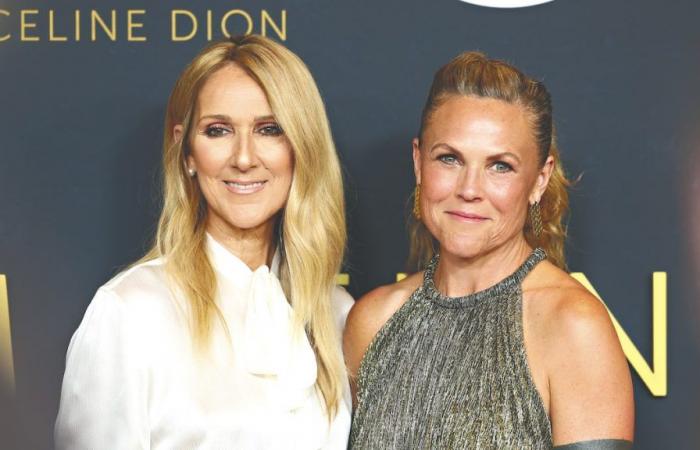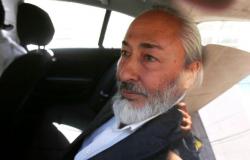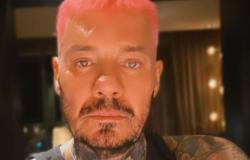Céline Dion in the company of Irene Taylor, director of the documentary about the life of the Canadian singer.
Photo: Getty Images
Even before she was born, the name Céline Dion was synonymous with music. Her mother, Thérèse Dion, had chosen the name during her pregnancy after hearing the song “Céline,” written by French singer-songwriter Hugues Aufray, a hit in Quebec, Canada, where the singer is from.
The youngest of 14 siblings, Céline quickly showed an interest in music. She grew up surrounded by the radio, her parents’ record player and musical evenings, where washing dishes became a spontaneous concert. Her brothers and sisters would take kitchen utensils and imitate songs by Janis Joplin, Jimi Hendrix, The Doors and The Beatles, as can be read in the book “Céline: the authorized biography”, written by Georges-Hébert Germain.
The song “Ce n’était qu’un rêve” (in Spanish It was just a dream), released in June 1981, was the debut of Céline Dion, who, since the age of 12, when she recorded that first single, has remained current in the music industry. The singer has also had an intimate relationship with cinema. She has created and performed songs for productions such as “Beauty and the Beast” (1991) and “Titanic” (1997), in which the artist performed the songs “Beauty and the Beast” and “My Heart Will Go On”, respectively. Both compositions won the Oscar award in the category of Best Original Song.
After 250 million records sold, five Grammy Awards and mentions at the United States Academy of Motion Picture Arts and Sciences Awards, the artist is now the protagonist of the documentary “I Am Céline Dion,” which premiered on June 25 in Prime Video.
In 2022, during the production of the documentary, the artist revealed that she had been diagnosed with Stiff Person Syndrome (SPS), a rare and progressive neurological disorder, which primarily affected her muscles. Stiffness, shortness of breath, and muscle spasms could impair her ability to walk, and what could be even worse for her, to speak and sing. Just as the disease affects the muscles in her legs, back, and arms, it does so in those of her throat, her main source of work.
The news of the singer’s health came as a surprise to her fans around the world and to the director of “I Am Celine Dion,” Irene Taylor, who was already working on the documentary about the artist. “I think my films from the past are what have been driven by the characters. That’s why I don’t make films about political issues or specific things. I’m interested in those things, but I prefer to tell the story through a person’s experience,” explains the director in an interview with The viewer.
“I like to follow people in their lives, that’s much more interesting to me. I know Céline saw some of my work, maybe that attracted her, but I can’t speak for her. Although yes, I am certainly a character-driven storyteller,” adds the director. Taylor has focused her filmmaking work on documentaries, and was nominated for an Oscar with the short film “The Final Inch” (2009). She also received an Emmy nomination for her documentary “Moonlight Sonata: Deafness in Three Movements” (2019). Other of her works have been “The Dark Side of the Boy Scouts” (2022) and “Trees and Other Entanglements” (2023).
The filmmaker first spoke to Dion in 2021, when the world was still locked down due to the pandemic. A year earlier, she had been contacted to see if she was interested in directing the documentary about the artist. “For a long time, Céline called herself an open book. She used that phrase, but I couldn’t imagine or have anticipated how open she was. I was worried that she wasn’t and that she might hide things (…) When we started to embark on the shoot, I was very surprised by how open she was.”
Taylor accompanied Dion for a year, during which she witnessed the end of the pandemic and complicated moments for the singer’s health that led her to have to cancel her musical residency in Las Vegas, Nevada, her tours in North America and Europe, and repeatedly decline interviews with the media, but allowing the director to continue with the documentary.
“They gave me almost 600 hours of Céline’s personal archive. So she had a lot more than she could use. I had to choose the material for its cinematographic value and place it in the film as a counterpoint or as an example of what she was talking about. So we had very high conditions for that footage to go into the film. I didn’t want to immerse the film in those archives, but I wanted them to be there as a constant juxtaposition, showing the different stages of it. The interesting thing is that the Céline of the archive is very similar to the person she is now. Simply put, she lived in a body that was no longer cooperating, that was the big difference.”
The title “I Am Céline Dion” was conceived in the last stage of production, but it had been resonating since filming. “She told me something about herself when she was a child, that she didn’t create this person. She didn’t create Céline Dion, she is. That caught my attention later in the editing of the film. I thought maybe it would be a good title because it focuses on the present tense. It’s not that she was or that she could become, but that she is the person she is now. Although we glimpse a little bit of her past and her hopes for the future, it’s really about who she is and what she’s going through right now.”






